📞+86 153 7530 2641 📧 hongjing.Wang@feichuncables.com

What Are the Most Common Cable Types Used in the European Union (EU) and Their Applications?
Discover the most common cable types used in the European Union (EU), from H05VV-F flexible PVC cables to fiber optic and high-voltage transmission lines. Learn their applications, EU standards, and benefits for residential, commercial, industrial, and renewable energy projects.
hongjing.Wang@Feichun
8/11/202511 min read
Introduction
The European Union's electrical infrastructure represents one of the world's most sophisticated and standardized cable networks, serving over 450 million people across 27 member states. The diversity of cable types used throughout the EU reflects the region's commitment to safety, efficiency, and technological advancement across residential, commercial, industrial, and renewable energy sectors.
Common cable types in the EU must comply with rigorous standards established by key organizations including CENELEC (European Committee for Electrotechnical Standardization), the International Electrotechnical Commission (IEC), and national bodies such as Germany's VDE, the UK's BSI, and France's NF standards. These European Union cable standards ensure harmonized safety protocols, electromagnetic compatibility, and environmental compliance across all member states.
Understanding EU electrical cables is crucial for electrical professionals, engineers, and contractors working within European markets. Each cable type serves specific applications, from basic domestic wiring to complex industrial automation systems and high-voltage power transmission networks. This comprehensive guide explores the most prevalent cable types, their technical specifications, applications, and compliance requirements within the European regulatory framework.
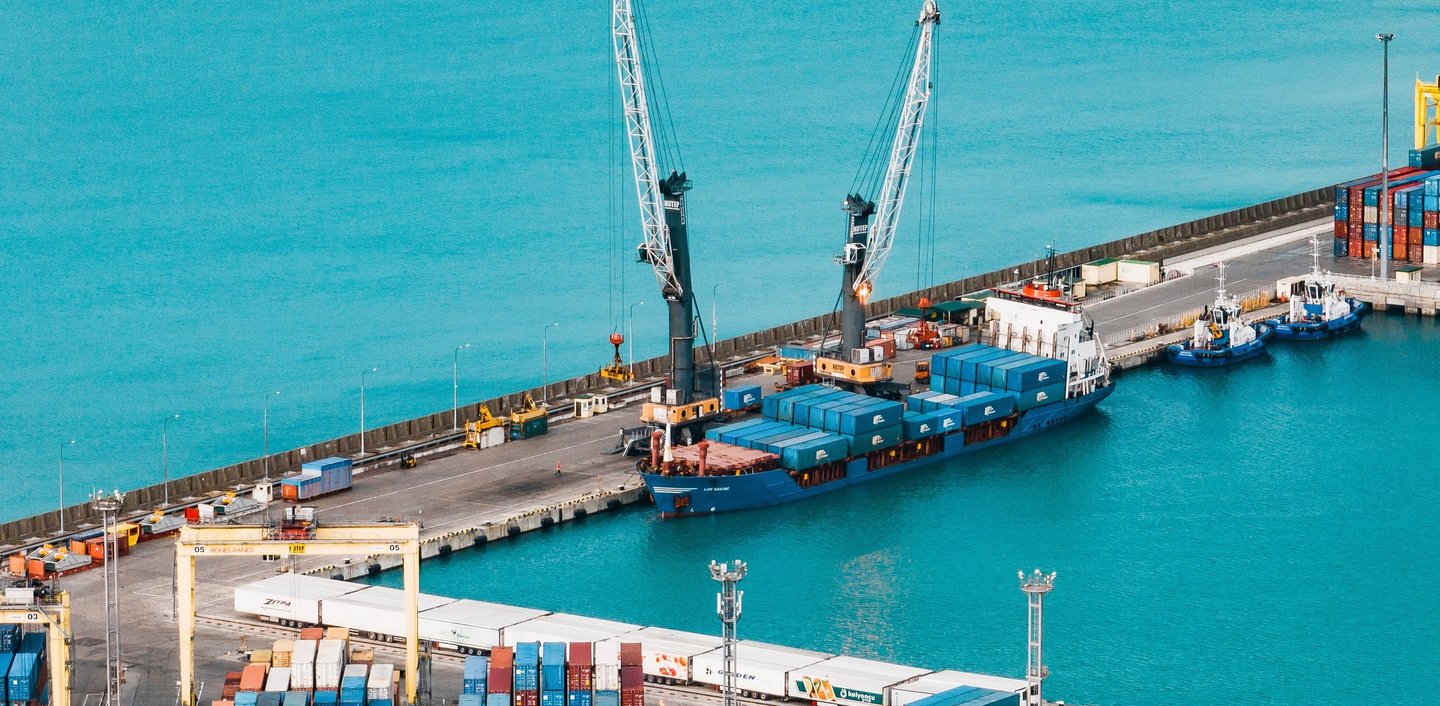

H05VV-F / H07VV-F – Flexible PVC-Insulated Cables
The H05VV-F flexible PVC cable EU standard represents one of the most widely used cable types for domestic and light industrial applications throughout Europe. These harmonized cables feature voltage ratings of 300/500V (H05) and 450/750V (H07), making them suitable for a broad range of low-voltage applications.
The designation system provides clear technical information: "H" indicates harmonized European standards, "05" or "07" specifies voltage ratings, "VV" denotes PVC insulation and sheathing, and "F" indicates flexible construction. This standardized naming convention ensures consistent identification across all EU member states.
Key applications include electrical appliances such as washing machines, refrigerators, and portable equipment where flexibility is essential. The cables excel in indoor environments where frequent movement, bending, or repositioning occurs. Their PVC insulation provides excellent flame resistance and durability, making them ideal for consumer electronics and light industrial machinery.
The flexible construction allows for easy installation in confined spaces, while the PVC sheathing offers protection against moisture, chemicals, and mechanical damage. These cables comply with EN 50525-2-11 standards, ensuring consistent quality and safety across European installations. Their cost-effectiveness and reliability have made them the preferred choice for many residential and commercial applications.
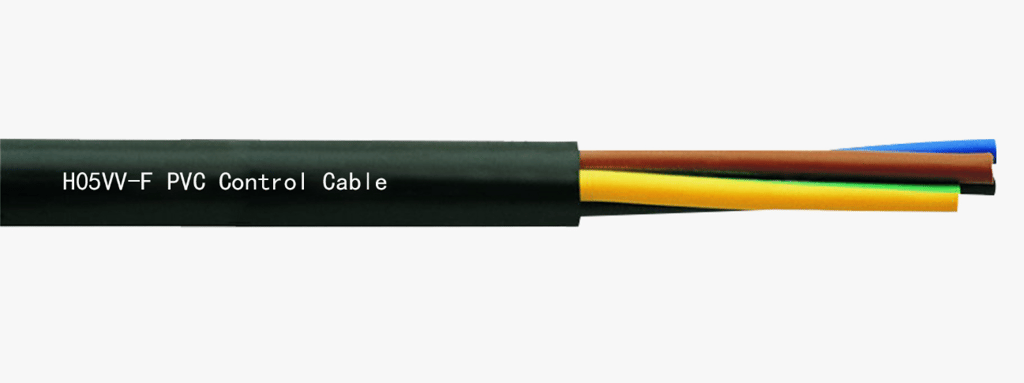

NYM – PVC-Insulated and Sheathed Cable
NYM cable for EU fixed wiring applications has become synonymous with reliable building installations across Europe. These versatile cables feature PVC insulation and sheathing, designed specifically for permanent installations in residential and commercial structures.
Available in voltage ratings of 300/500V and 450/750V, NYM cables provide excellent performance in fixed wiring systems. Their construction includes multiple copper conductors surrounded by PVC insulation, with an additional PVC sheath providing comprehensive protection. This double-layer protection ensures long-term reliability in building installations.
The cables are particularly suited for indoor wiring in walls, ceilings, and building infrastructure where permanent installation is required. They perform exceptionally well in both dry and damp environments, making them versatile for various building conditions. The flame-retardant properties meet stringent European fire safety requirements.
Installation advantages include easy stripping and termination, reducing labor costs and installation time. The cables' robust construction provides mechanical protection while maintaining flexibility for routing through building structures. Compliance with VDE 0250-204 standards ensures consistent quality and safety performance across German and broader European markets.

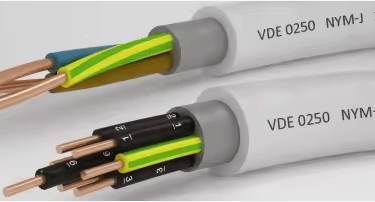
CY, YY, and SY Control Cables
EU control cables for industrial machinery encompass three primary variants: CY (shielded), YY (non-shielded), and SY (steel-armored braided) cables. Each type addresses specific industrial automation and machinery control requirements throughout European industrial sectors.
CY cables feature comprehensive electromagnetic shielding, making them essential for environments with significant electrical noise or interference. The shielding consists of copper braiding or aluminum foil that prevents electromagnetic interference from affecting control signals. These cables are crucial in sophisticated industrial automation systems where signal integrity is paramount.
YY cables provide cost-effective solutions for control applications where electromagnetic interference is minimal. Their non-shielded construction offers excellent flexibility while maintaining reliable signal transmission in cleaner electrical environments. These cables are commonly used in basic machinery control and building automation systems.
SY cables incorporate steel wire braiding for enhanced mechanical protection in harsh industrial environments. The steel armor provides exceptional resistance to crushing, cutting, and abrasion while maintaining flexibility for installation and operation. These cables excel in applications involving moving machinery, robotic systems, and environments with significant mechanical stress.
All three variants comply with EN 50525-2-11 standards and offer high flexibility for dynamic applications. Their multi-core construction accommodates various control signals, making them versatile for complex industrial automation systems across European manufacturing facilities.
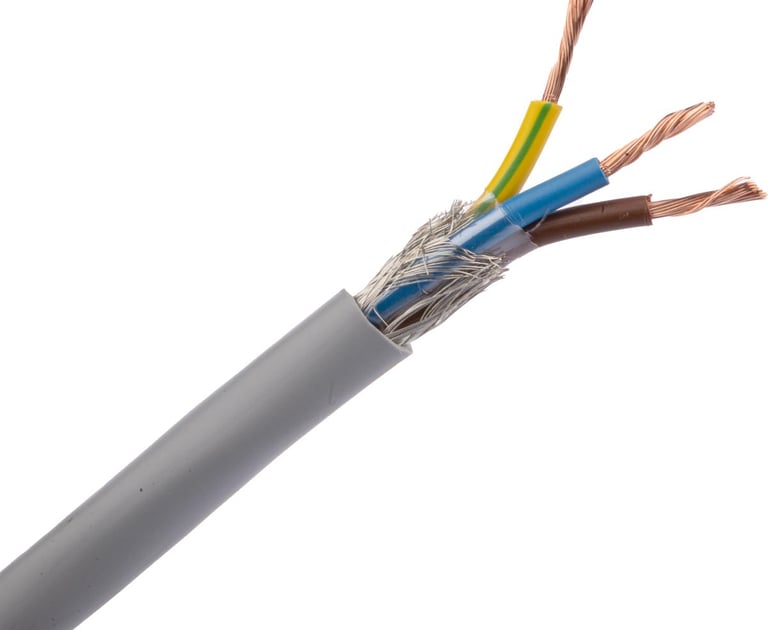

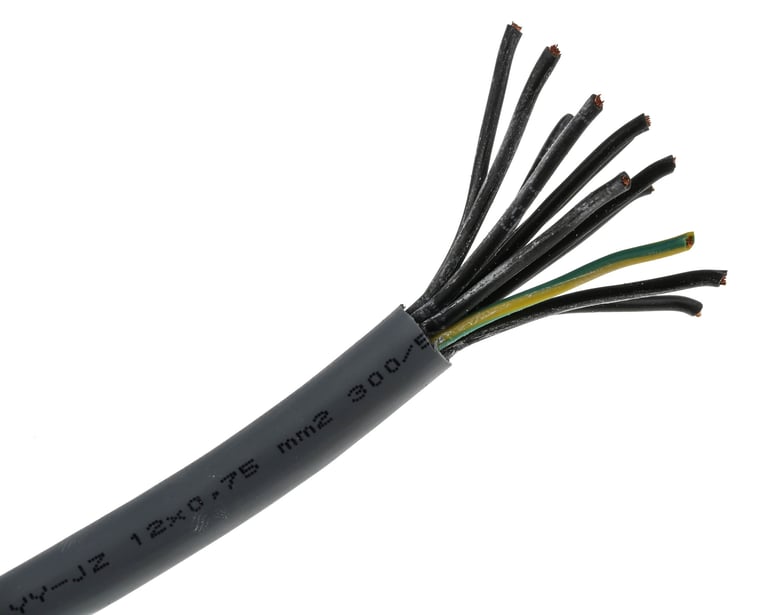

FP200/Fire-Resistant Cables
Fire-resistant cables for EU public buildings represent critical safety infrastructure designed to maintain circuit integrity during fire emergencies. FP200 cables specifically address European requirements for emergency systems that must continue operating during fire conditions.
These specialized cables maintain electrical continuity when exposed to flames and high temperatures, ensuring that critical safety systems remain operational during emergencies. The cables feature advanced insulation materials and construction techniques that resist fire damage while preventing the spread of flames through cable routes.
Primary applications include fire alarm systems, emergency lighting, public address systems, and smoke extraction fans in hospitals, schools, airports, and other public buildings. The cables are essential for evacuation systems and emergency communication networks that must function reliably during fire events.
Key features include low-smoke and halogen-free (LSHF) construction that minimizes toxic gas emission during fire exposure. This characteristic is crucial in enclosed public spaces where smoke toxicity poses significant risks to occupants. The cables also provide excellent flame retardancy and resistance to high temperatures up to specified limits.
Compliance with EN 50200 standards ensures consistent fire performance across European installations. These cables undergo rigorous testing to verify their ability to maintain circuit integrity under fire conditions, providing building occupants and emergency responders with reliable safety systems.

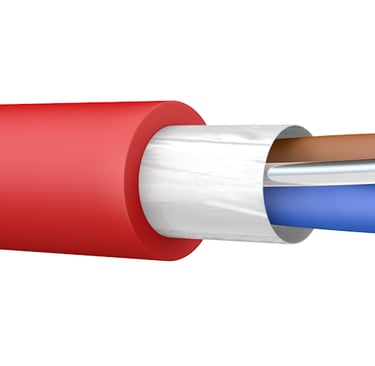
XLPE-Insulated Power Cables
XLPE insulated power cable EU standard technology dominates medium and high-voltage power distribution throughout Europe's electrical grid infrastructure. Cross-linked polyethylene (XLPE) insulation provides superior performance characteristics compared to traditional PVC insulation for power transmission applications.
The cross-linking process creates a three-dimensional molecular structure that significantly enhances the insulation's thermal, electrical, and mechanical properties. This results in cables capable of operating at higher temperatures (up to 90°C) while maintaining excellent electrical characteristics and longevity.
Applications span underground and overhead power distribution networks, industrial plants, and renewable energy systems including wind farms and solar installations. The cables' high-temperature resistance enables higher current-carrying capacity, improving system efficiency and reducing installation costs.
Technical advantages include low dielectric losses that minimize power waste during transmission, excellent moisture resistance for underground installations, and superior aging characteristics that extend service life. The insulation maintains its properties over decades of operation, providing reliable power transmission throughout its design life.
XLPE cables comply with IEC 60502-1 standards, ensuring consistent performance across European power networks. Their proven reliability and efficiency have made them the preferred choice for utility companies and industrial power systems throughout the EU.
Ethernet Cables – Cat 5e, Cat 6, Cat 7
EU Ethernet cables for high-speed networks form the backbone of modern European communication infrastructure, supporting everything from residential internet connections to enterprise data centers. The evolution from Cat 5e through Cat 6 to Cat 7 represents continuous advancement in data transmission capabilities.
Cat 5e cables support frequencies up to 100 MHz and data rates up to 1 Gigabit per second, making them suitable for most residential and small business applications. Their twisted-pair construction provides basic protection against electromagnetic interference while maintaining cost-effectiveness for widespread deployment.
Cat 6 cables extend performance to 250 MHz frequency and support 10 Gigabit transmission over shorter distances. Enhanced construction with improved shielding and tighter twist specifications reduces crosstalk and enables higher data rates. These cables are prevalent in modern office buildings and commercial installations.
Cat 7 cables represent the premium tier, supporting frequencies up to 600 MHz and data rates exceeding 10 Gigabits per second. Individual pair shielding plus overall cable shielding provide exceptional electromagnetic compatibility, making them ideal for high-density data center environments and industrial automation networks.
All categories maintain compatibility with standard RJ45 connectors, ensuring interoperability across European network installations. Compliance with ISO/IEC 11801 standards guarantees consistent performance and compatibility across international network systems.


Coaxial Cables
Coaxial cables for EU broadband systems continue to play vital roles in television, satellite communications, and broadband internet distribution throughout Europe. Despite fiber optic advancement, coaxial technology remains essential for many communication applications.
The cables feature a central conductor surrounded by insulation, metallic shielding, and protective outer jacket. This construction provides excellent electromagnetic shielding and enables high-frequency signal transmission with minimal loss over considerable distances.
Primary applications include television and satellite broadcasting systems, cable internet distribution, and closed-circuit television (CCTV) security systems. The cables' ability to carry multiple frequency channels simultaneously makes them efficient for broadcast and communication applications.
Weather-resistant variants designed for outdoor installations feature enhanced UV protection and moisture sealing, enabling reliable performance in European climatic conditions. Indoor versions focus on flexibility and ease of installation while maintaining signal integrity.
Compliance with EN 50117 standards ensures consistent impedance characteristics and shielding effectiveness across European installations. The cables' proven reliability and cost-effectiveness continue to make them relevant for many communication applications.
Fiber Optic Cables
Fiber optic cables for EU data centers represent the pinnacle of high-speed data transmission technology, utilizing light signals to achieve unprecedented bandwidth and transmission distances. European telecommunications infrastructure increasingly relies on fiber optic technology for backbone networks and high-performance applications.
Single-mode fiber features a small core diameter that allows only one light mode to propagate, enabling long-distance transmission with minimal signal loss. These cables are essential for telecommunications networks, internet backbone connections, and intercity communication links throughout Europe.
Multi-mode fiber utilizes larger core diameters that support multiple light modes, making them suitable for shorter-distance applications such as building networks and campus connections. While transmission distances are limited compared to single-mode, they offer cost-effective solutions for local area networks.
The cables provide complete immunity to electromagnetic interference, making them ideal for industrial environments with significant electrical noise. They support virtually unlimited bandwidth expansion and offer exceptional security since signal interception requires physical cable access.
Compliance with IEC 60793 standards ensures consistent optical performance and mechanical characteristics across European installations. The technology's scalability and future-proof characteristics make it the foundation of Europe's next-generation communication infrastructure.

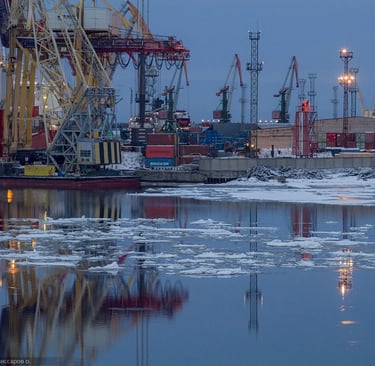
Solar Cables (PV Cables)
Solar PV cables for EU renewable energy installations address the specific requirements of photovoltaic systems throughout Europe's expanding renewable energy infrastructure. These specialized cables must withstand harsh outdoor conditions while maintaining reliable electrical performance over decades.
The cables feature advanced polymer insulation and jacketing materials specifically formulated for UV resistance, temperature extremes, and weather exposure. This specialized construction ensures reliable operation in European climatic conditions ranging from Mediterranean heat to Nordic cold.
Applications include connections between solar panels, inverters, and electrical distribution systems in residential, commercial, and utility-scale solar installations. The cables must maintain electrical integrity while exposed to continuous sunlight, temperature cycling, and weather conditions.
Key technical features include high-voltage ratings up to 1.8kV DC, flame retardant and halogen-free construction for safety, and flexible design for easy installation around solar panel mounting systems. The cables' durability ensures long-term reliability matching solar panel lifecycles.
Compliance with EN 50618 standards guarantees consistent performance and safety across European solar installations. As Europe continues expanding renewable energy capacity, these specialized cables play increasingly important roles in sustainable energy infrastructure.
High-Voltage Cables
High-voltage transmission cables EU systems form the critical infrastructure connecting power generation facilities to distribution networks throughout Europe's interconnected electrical grid. These specialized cables operate at voltages exceeding 35kV and require sophisticated insulation systems.
The cables utilize either XLPE or EPR (Ethylene Propylene Rubber) insulation systems designed for high-voltage applications. Comprehensive metallic shielding ensures safety while maintaining electromagnetic compatibility with surrounding infrastructure.
Primary applications include utility power grids connecting power plants to substations, renewable energy projects such as offshore wind farms, and industrial facilities requiring high-voltage power supplies. The cables enable efficient long-distance power transmission with minimal losses.
Construction features include multiple conductor configurations, advanced insulation systems, metallic shielding, and robust protective jackets. Underground installations require additional moisture barriers and mechanical protection, while submarine cables incorporate specialized waterproofing technologies.
Compliance with IEC 60840 standards ensures consistent electrical and mechanical performance across European high-voltage networks. These cables represent critical infrastructure investments that must provide reliable service for decades in challenging operating conditions.
Application Scenarios and Common Issues
Residential Applications: European homes commonly utilize H05VV-F cables for appliances, NYM cables for fixed wiring, and Cat 6 Ethernet cables for internet connectivity. Proper cable selection ensures safety, reliability, and compliance with local electrical codes.
Commercial Buildings: Office complexes require diverse cable types including Cat 6/Cat 7 for networks, fire-resistant cables for safety systems, and XLPE power cables for electrical distribution. Coordination between different cable systems ensures optimal building performance.
Industrial Facilities: Manufacturing plants utilize control cables (CY, YY, SY), high-voltage power cables, and specialized communication cables for automation systems. Proper electromagnetic compatibility planning prevents interference between different cable systems.
Frequently Asked Questions
Q: What are the main differences between H05VV-F and H07VV-F cables? A: The primary difference lies in voltage ratings - H05VV-F is rated for 300/500V while H07VV-F handles 450/750V. H07VV-F cables feature enhanced insulation for higher voltage applications and typically have thicker conductor insulation.
Q: Can NYM cables be used in outdoor applications? A: NYM cables are designed primarily for indoor use. For outdoor applications, consider cables with UV-resistant jackets and enhanced weather protection. Direct burial applications require cables with specific soil resistance characteristics.
Q: How do I choose between CY, YY, and SY control cables? A: Select CY cables for electromagnetically noisy environments requiring shielding, YY cables for clean environments where cost is a factor, and SY cables for applications involving mechanical stress or moving machinery.
Q: What are the installation requirements for fire-resistant cables? A: Fire-resistant cables require proper support systems, appropriate separation from other cables, and compliance with fire stopping requirements. Installation must follow manufacturer guidelines and local fire safety codes.
Q: Are there specific grounding requirements for XLPE power cables? A: Yes, XLPE power cables require proper grounding of metallic shields and armor. Grounding systems must comply with local electrical codes and provide effective fault current paths for safety and system protection.
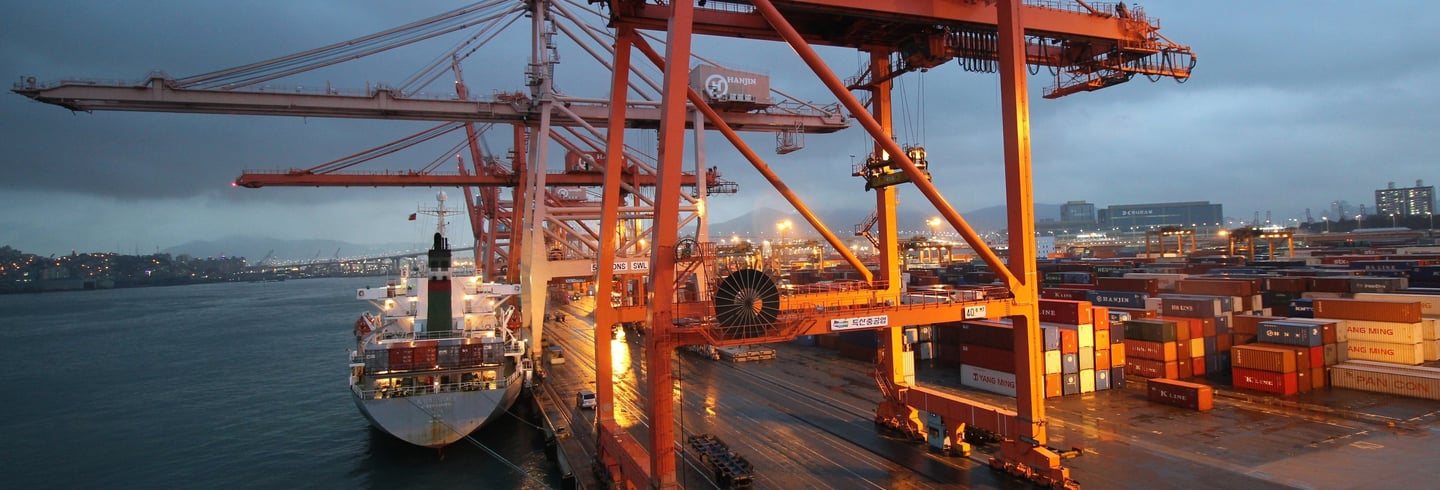

Conclusion
The European Union's diverse cable infrastructure reflects the region's commitment to safety, efficiency, and technological advancement across all sectors. From H05VV-F flexible cables in residential applications to sophisticated fiber optic networks in data centers, each cable type serves specific purposes within Europe's comprehensive electrical and communication systems.
The harmonized standards established by CENELEC, IEC, and national organizations ensure consistent safety, performance, and environmental compliance across all 27 member states. This standardization facilitates trade, ensures interoperability, and maintains high safety standards throughout European installations.
As Europe continues advancing toward renewable energy goals and digital transformation, cable technology will evolve to meet emerging requirements. Solar PV cables support the transition to sustainable energy, while advanced Ethernet and fiber optic cables enable digital infrastructure expansion. High-voltage transmission cables facilitate the integration of renewable energy sources across national boundaries.
Understanding these common cable types and their applications enables electrical professionals to make informed decisions, ensure compliance with European standards, and contribute to the continued development of Europe's world-class electrical infrastructure. The ongoing evolution of cable technology will continue supporting Europe's leadership in safety, sustainability, and technological innovation.
How to Reach Us
Get in Touch
SiteMap
Product Catalogue
Reeling Cable
Festoon Cable
Shore Power Cable




Scan to add us on WeChat
